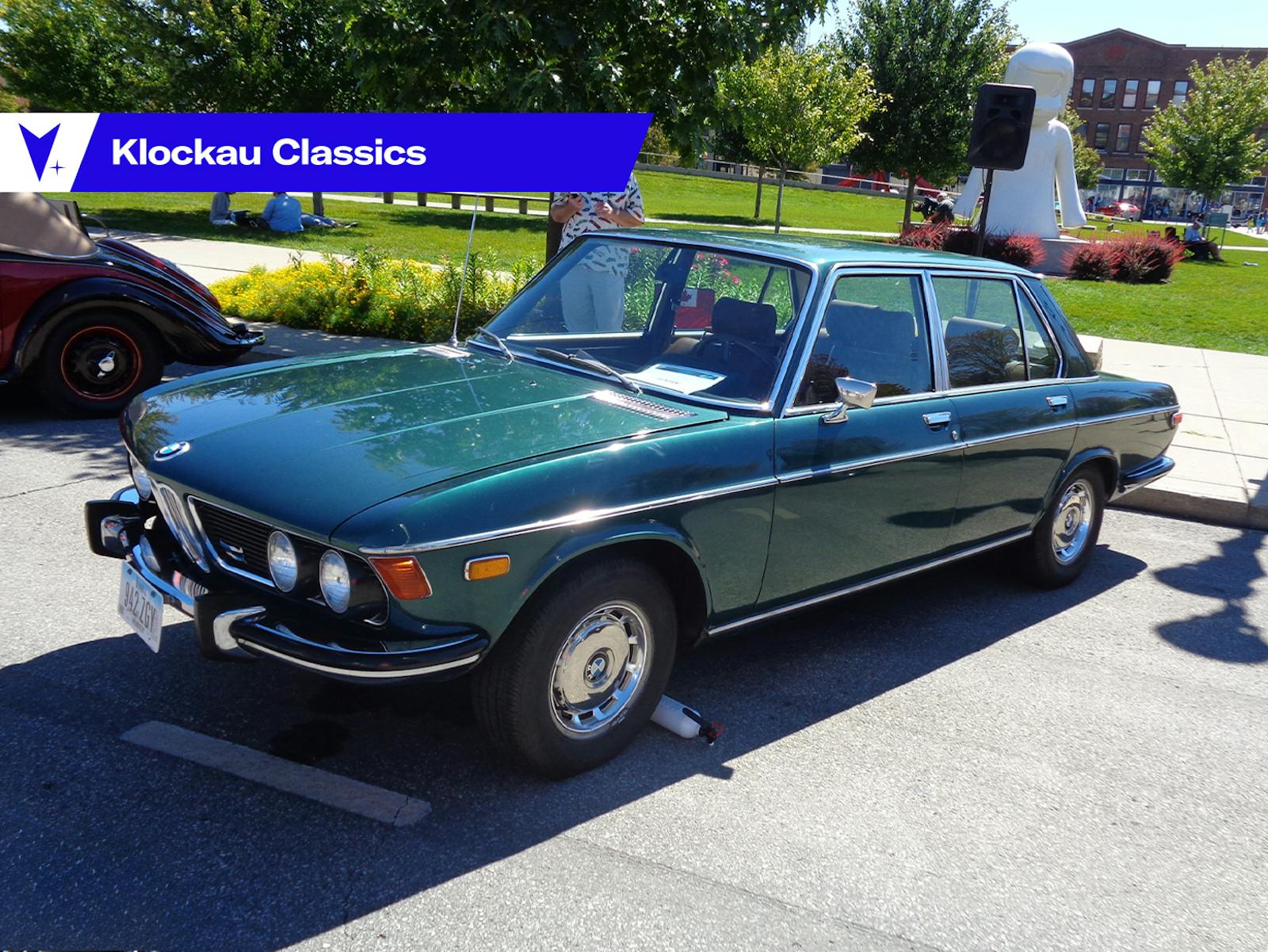1978 Pontiac Grand Safari Wagon: Maximum Massey

Today’s column (most of it, anyway) is actually written by Mike Massey, a friend of mine in Round Rock, Texas. Like me, he shares my love of full-sized, woodgrained domestic station wagons and owns a Roadmaster Estate Wagon, among other vintage GM rolling stock, today. I’ve always loved the 1977–79 B-body Pontiacs, especially the fancier versions.

Back when I was still a toddler, my dad had a metallic root beer brown 1979 Bonneville sedan with a beige vinyl top and beige interior. It was his company car and replaced a metallic ice blue ’77 Chevy Monte Carlo.
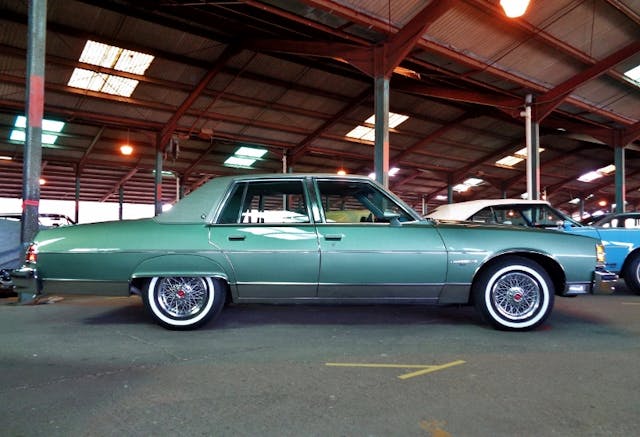
I loved that Bonneville, all the chrome, the fender skirts, just everything. Still do. I remember walking around it on weekends when Dad was washing the cars in the driveway. That car was also the subject of my first-ever car memory. Though I didn’t ride home from the hospital in it—that job fell to my mom’s dark blue ’77 Volvo 245DL wagon. Anyway, here’s the story of Mike’s dad’s special-ordered ’78 Grand Safari, a most Broughamtastic wagon.
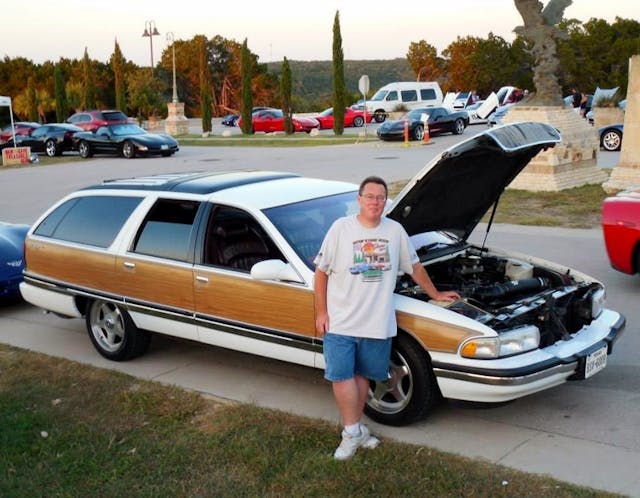
Mike:
OK, I get lots of questions and comments about this car, so here is the long “novel” of our ’78 Pontiac Grand Safari, which we owned from 1978–86, and how we came to own it.

Dad really hated selling their pretty, chocolate brown ’72 Cutlass Supreme two-door coupe, but my younger brother was on the way at the time, and we had just moved from Amarillo, Texas, to Tulsa, Oklahoma (Dad with a Southwestern Bell promotion), and Dad had inherited his Father’s ’73 Cheyenne Super pickup for himself, so it was new car time for Mom.

Dad always liked Oldsmobiles, but he hated the woodgrain design on those new ’77–78 B-body Custom Cruisers, where the wood was only on the lower body, except where wood ran up and over the wheel openings. Dad thought that was just plain ugly. He considered a Buick, but I think that was still an “older-person’s” car to him. He also badly wanted a ski boat, and while reading that ’78 was going to be the last year of the Pontiac 400 engine wagon option—and that it was the most powerful motor offered in these wagons, that made him look toward buying a Safari. Dad went and looked at the Pontiacs (I always tagged along on our many Sunday-afternoon “car-lotting” trips, which continued all through my youth and beyond), and I remember Dad’s only real complaint with the Pontiacs was that they didn’t have the chrome/stainless lower-body trim on the lower body rockers, lower doors, and lower quarter panels like the Buick and Oldsmobiles did.

Dad finally went to Ernie Miller Pontiac, on Memorial Drive in Tulsa, and ordered a Grand Safari exactly how he wanted it—with as much power and luxury and as many options as he could check off the order form. He ordered that big Pontiac 400, the towing package with every heavy-duty option, and a Delco cassette stereo. (No 8-track for us; Dad was already addicted to recording American Top 40 every weekend on our living room stereo, and he wanted to listen to his Casey Kasem and mix-tapes in his new car.)

He chose the full dashboard gauge package (with the central electric clock and not the fuel economy gauge), power everything, and that wacky 1970s Valencia velour striped interior trim; basically he checked off every box. The car ended up costing well over $10,000, more than most Corvettes that year. It was really loaded.
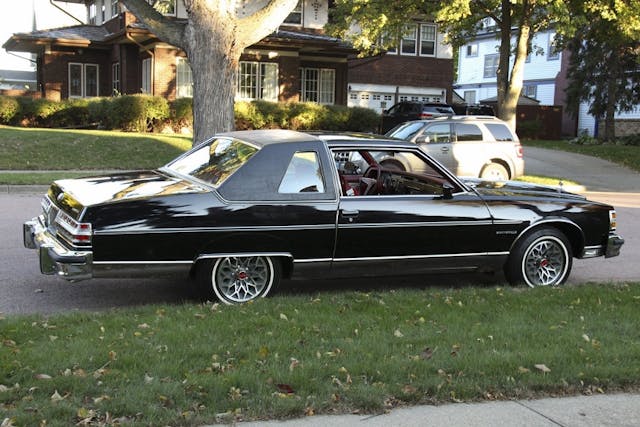
Dad ordered cornering lights, a tilt steering wheel, power antenna, door panel courtesy lights, and wood-trimmed deluxe steering wheel—and all of those options were missing when the Safari arrived. He was so mad. He’s ordered every option but the sunroof, and it had none of it. I was a little kid then, but I can still remember him ranting.
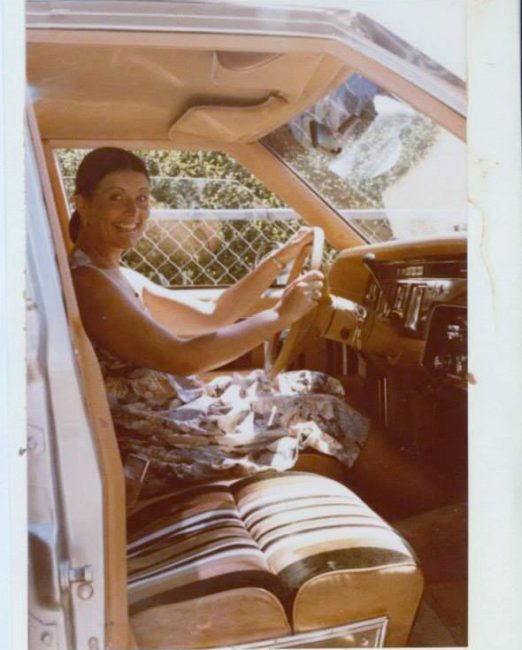
The colors are what really stood out, and they were also a problem from the start. Dad wanted the extra-cost ($380) Valencia velour interior from the Bonneville Brougham, but he wanted a silver car, and the dealers said he could not order a silver car with tan Valencia interior—it wouldn’t look right. He wanted him to order the red Valencia interior, which was an “approved” color for a silver car. It’s not clear if it was Mom who didn’t like the red, Dad wanting a lighter color for the hot Tulsa summers, or just that Dad liked the tan, but he insisted on that tan interior, saying with the exterior woodgrain trim, it would look just fine.

The dealer put in the order, and Pontiac built the car, and to the dealer’s surprise it looked fantastic when it came in. The silver paint had a lot of metallic in it, and sparkled, and the dark wood with lighter tan outline trim contrasted wonderfully with that wild striped interior. They even put it on the showroom floor when it arrived. Dad said in the months soon after taking delivery, there were other silver-over-tan Safaris on the lot there at Ernie Miller. I guess he started a fad!
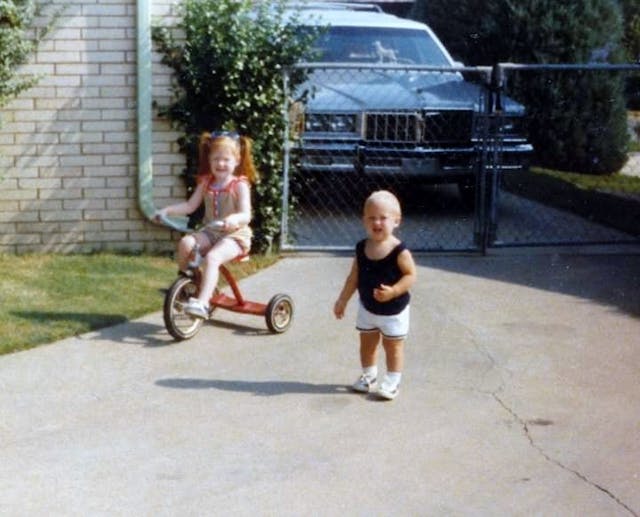
As mentioned, it was special ordered with the last of the real Pontiac 400 engines and with the towing package for the lower rear gearing (remember the boat … that Dad never got?). It would really scoot for a 1970s car. It was also geared so low that, when we came down the mountains in Colorado (we moved there in 1984), if Dad took his foot off the gas it would actually slow down, even on the steep mountain grades.
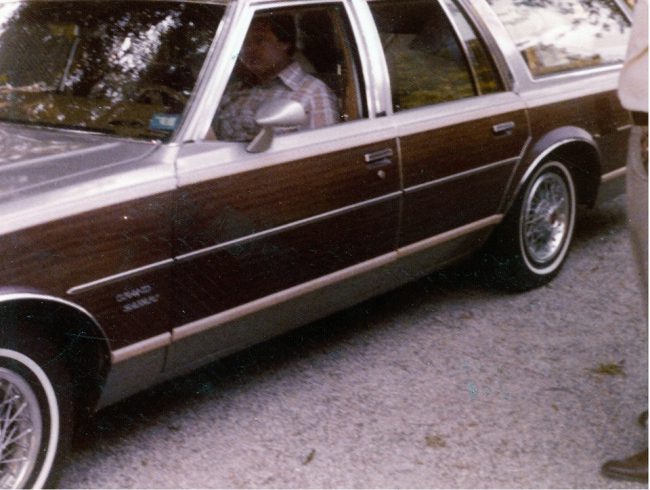
There were, however, some “issues” when the car finally came in. Dad had ordered the Pontiac “Snowflake” aluminum alloy wheels, but when it arrived it had wire-wheel hubcaps. Pontiac dropped the snowflake option from the wagons, saying the mags could not support the load the wagons might carry, so they were offered only on the sedans. I’ve also been told all towing-package Safari wagons got the steel wheels with hubcaps … but don’t know if that’s really the case or not. Dad refused delivery until the dealer swapped on the Rally II wheels you see in most of the pictures, but there’s one pic of Dad pre-delivery with the wire hubcaps (above). The Rallys were not what he really wanted—Dad was just 31 when he bought this car … no wire hubcaps for him—but it looked sportier, at least, with the Rally IIs.
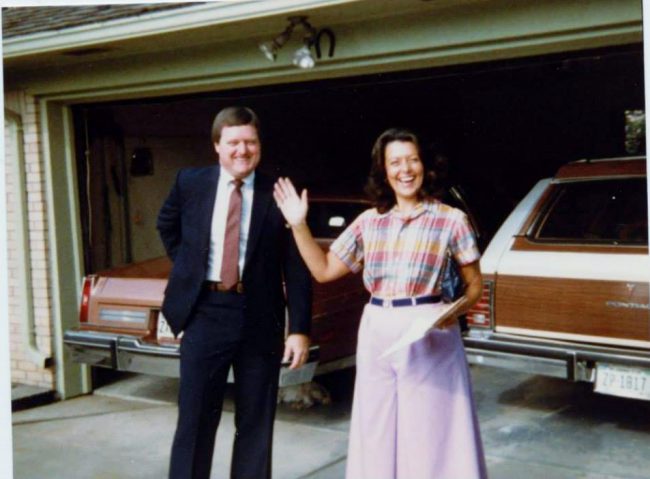
Other mistakes by Pontiac that went uncorrected were: he ordered a tilt steering column and cruise control, as well as the pretty wood-trimmed Bonny Brougham steering wheel, and it showed up with a fixed, non-tilt steering column and base-level Bonny steering wheel with a single silver strip that ended in a Pontiac arrowhead emblem (in hindsight, the base-level wheel was better than the wood-trimmed version, as every wood wheel I’ve since seen has the wood rubbed off the outer wheel spokes from handling). The car did have cruise control, thankfully. Another issue is he had ordered the “light package” with cornering lights on the front fenders and chrome-trimmed red and white door panel lights … and the car arrived without that package too. Dad lived with it, but he never gave Ernie Miller any more of his business.
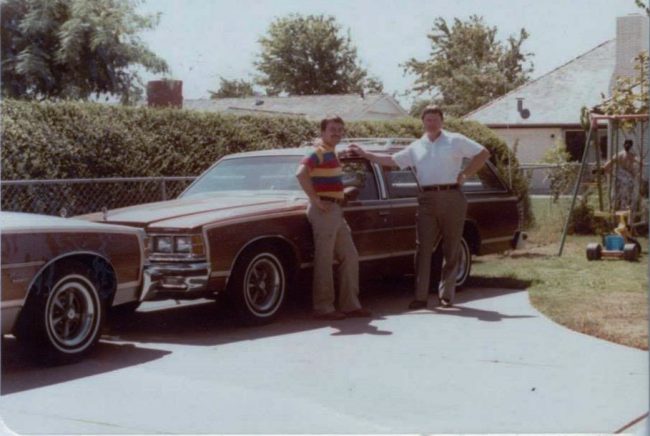
My dad’s good friend bought a brown ’78 Grand Safari for his family, and the wagons can be seen nose-to-nose in our back yard in Tulsa, with the proud owners posing.
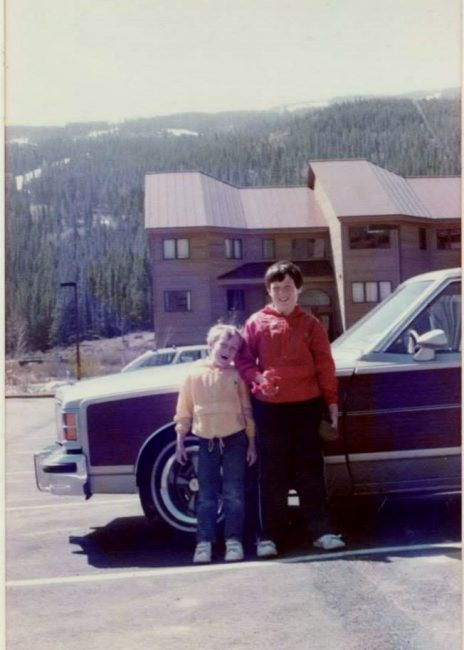
We did have a bit of a nightmare trip when that Safari was basically brand new. My grandparents had just moved from Poplar Bluff, Missouri, to a big house in Waco, Texas, and they invited us down for Thanksgiving (about 350 miles away … six hours for normal folks, eight hours for my family, with 10+ bathroom stops). We set off for Waco in the freshly washed and gleaming Safari, with a big white Sears X-Cargo carrier strapped on the roof rack. Dad had cut foam to the exact size of the cargo area and with blankets had made a pallet bed back there for napping or playing (seatbelts were still for looks until the early ’80s).
We’d headed south with a Joe Walsh cassette in the stereo and sunny fall weather. About two hours south of Tulsa, the Safari began hitching and bucking and backing off. Finally it stalled, and Dad coasted to the side of the road. He was upset and boggled … this was a brand-new car! A trucker stopped, and the two of them looked over the car. Turns out, on the early B-body wagons, there was a mesh screen on the exhaust tip. I have no idea why GM did that, but that screen was totally blocked by what Dad guessed was burnt pieces of the catalytic converter. The car simply could not “breathe.” The trucker got a tire iron and proceeded to bash that screen out of the exhaust tip, then he had Dad start the car and rev the motor. Black chunks of screen and converter flew out … and the car ran perfectly the rest of the trip.
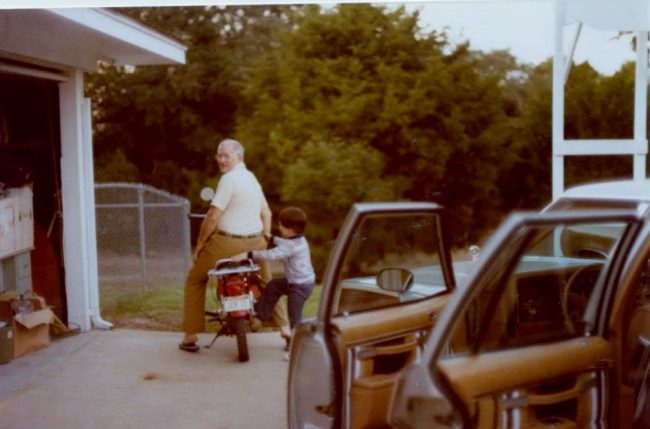
But the fun was not over. Upon arrival in Waco that evening, Dad parked the Safari nose-in to a basketball hoop in my grandparent’s driveway. The structure was made with two large wooden posts with various cross-braces, and the backboard was thick plywood (the photo above shows me climbing onto my grandad’s trail bike shortly after we arrived, and you can see the white basketball structure in front of the car). That night the weather changed and there were high winds and an ice storm. During the storm that basketball goal fell right onto our new wagon. We woke to find the world covered in ice, with that basketball goal laying on the dented hood and roof of the wagon, the windshield shattered. Dad was just ill, my grandfather was mortified, and we all tried to make the best of that Thanksgiving after they pulled the basket off the car.
We ended up driving all the way back to Tulsa that weekend while looking through a shattered windshield. Dad had the car repaired at the dealership soon after, but the paint on the hood and front of the roof faded a few years later, while the rest of the factory paint never faded a bit.
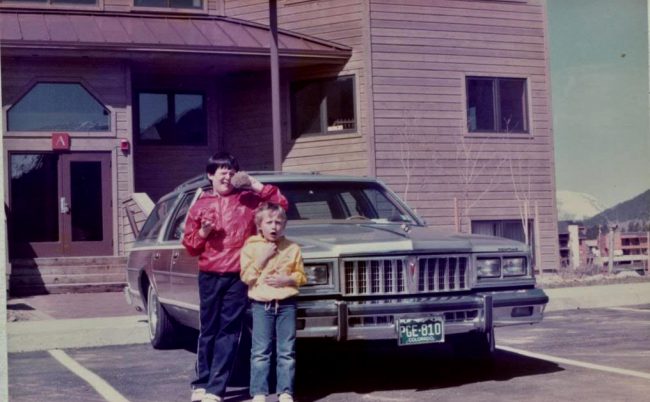
Another shorter story: When the car was just a few years old, we were traveling and I sat in the middle row, passenger side. I noticed the plasti-chrome tape on the door panel that outlined the wood trim was coming loose. I picked at it and then proceeded to pull if off the panel in long, thin strips, leaving the bare grey plastic trim. I then proceeded to throw the chrome tape at my kid-brother next to me, at which point my Dad was getting mad, and then some tape floated up front, where my Dad grabbed it, looked at it, looked back at me, squinted his eyes, and then opened them wide when he realized what the chrome fluttering around the interior was. He immediately slammed on the brakes and pulled over, after which I was hauled out of the car and spanked on the side of the road … in full view of passing cars. I learned not to pick at the plasti-chrome trim after.
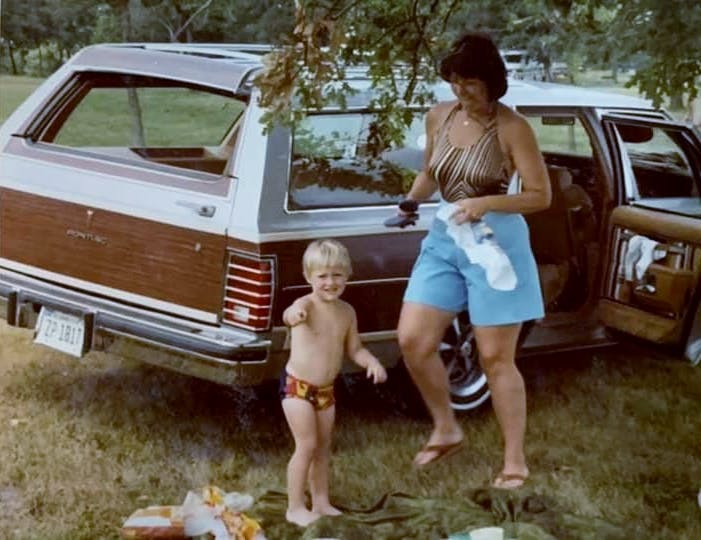
When the phone company broke up in 1984–85, Dad found out he was moving to AT&T, and we were being transferred. Dad sold that Safari to a teenager down the street in Denver, and we were moving to New Jersey. The Safari was still in nice shape and had about 90K miles on it then. The woodgrain under the door handles was starting to peel, and the hood and front roof paint was fading, and Dad said the rear differential had started growling a bit, but other than that, it was still in fine shape (minus some chrome trim on one door panel). I was 11, and when the kid pulled out of our driveway in the Safari I cried—no joke.
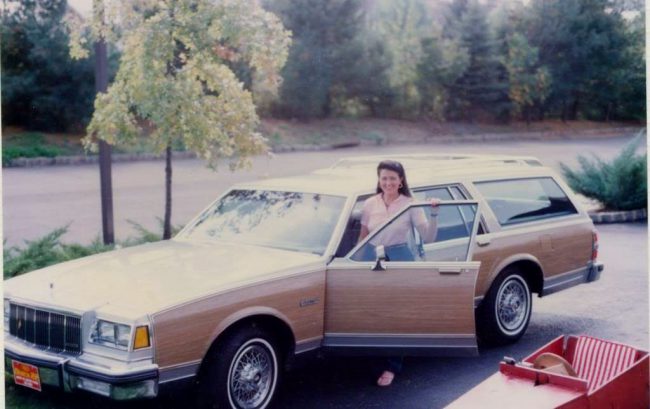
When we arrived in New Jersey, Dad bought Mom a silver 1986 Buick Electra Estate Wagon. It was a pretty car, with fancy pillowed grey cloth inside, and lots of wood inside and out, but it was gutless with the Olds 307, was never as special as that Safari was, and gave us a lot of trouble mechanically and cosmetically. The Safari had been such a wonderful and reliable car in comparison.
If any wagon nuts in Colorado ever come across a silver-over-tan ’78 Safari with wild-looking interior trim, please drop me a line. I hope that car is still alive somewhere!


